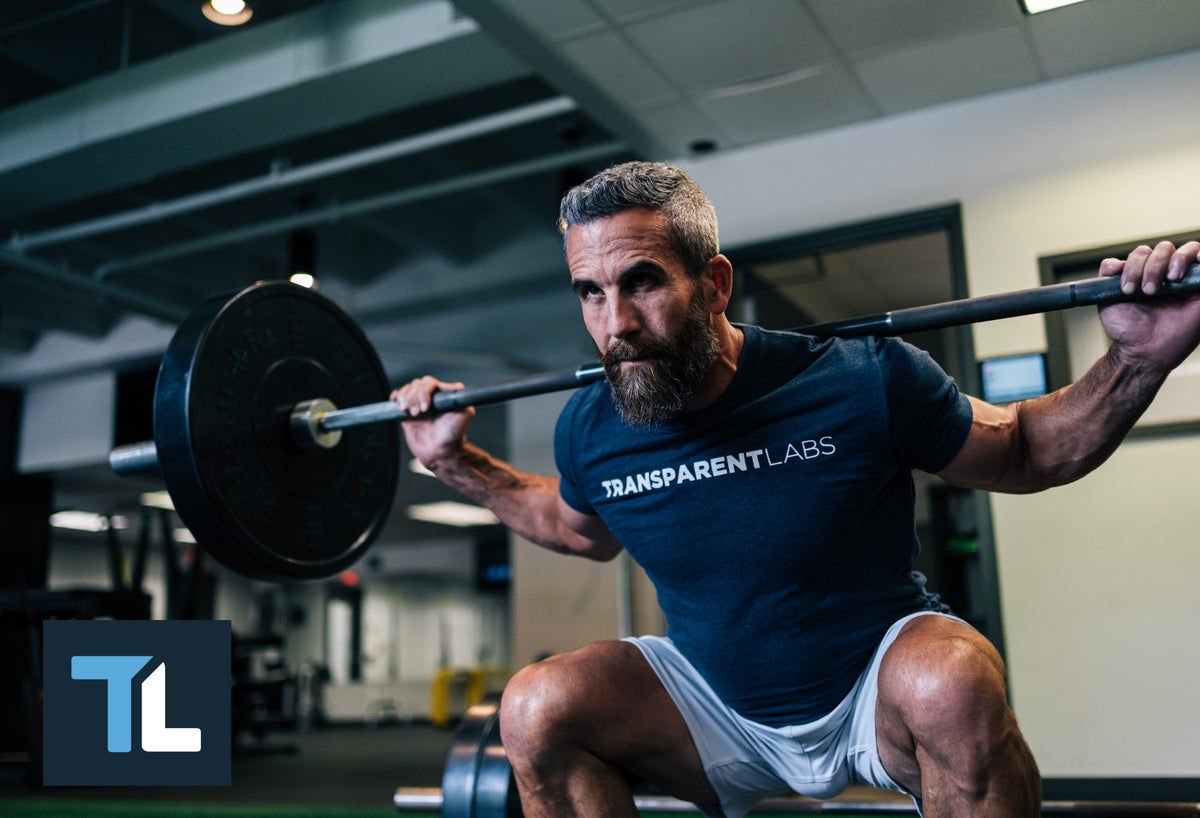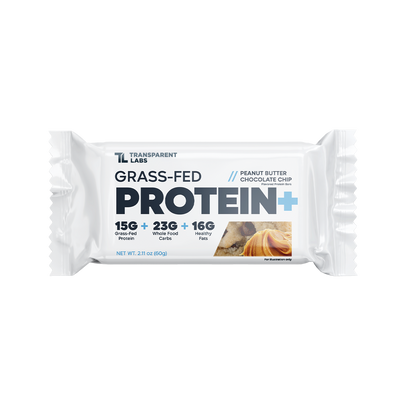Hypertrophy vs Strength Training | In Depth 2024 Comparison

While the terms "muscle hypertrophy" and "muscle strength" are often used interchangeably, they are, in fact, distinct. Yet, they have some things in common, and most people can benefit from elements of each as part of their workout routine. Read on as we explain the difference between hypertrophy training and strength training, and why they go hand in hand.
What Is Muscle Hypertrophy?
Muscle hypertrophy refers to the increase in muscle mass and cross-sectional area, primarily attributed to the enlargement of individual muscle fibers. This physiological adaptation is a response to repetitive muscular overload, typically achieved through resistance training exercises that create microtears in muscle fibers. The body repairs these microtears during recovery periods, leading to an increase in muscle fiber size—a process facilitated by satellite cells that donate nuclei to the damaged fibers, enhancing their protein synthesis capacity.
At the molecular level, hypertrophy involves intricate signaling pathways, including the mammalian target of rapamycin (mTOR) pathway, which plays a pivotal role in protein synthesis and muscle fiber growth. The hypertrophic response is also influenced by hormonal factors, notably insulin-like growth factor 1 (IGF-1), testosterone, and growth hormone, which modulate the anabolic environment conducive to muscle growth.
What Is Muscular Strength?
Muscle strength, on the other hand, is defined as the maximal force a muscle or muscle group can exert against resistance in a single effort. Unlike hypertrophy, which is concerned with muscle size, strength is a manifestation of the neuromuscular system's efficiency and its ability to recruit motor units and synchronize muscle fiber contractions. Strength gains are facilitated by both neural adaptations and intrinsic changes within the muscle fibers, including alterations in the muscle's contractile proteins—actin and myosin.
Neural adaptations play a crucial role in the initial phase of strength training, with improvements in the motor cortex's ability to activate motor units and in the synchronization of firing rates, enhancing muscle contraction efficiency without noticeable changes in muscle size. As training progresses, changes in the muscle's architecture, including increases in actin and myosin concentrations, contribute to enhanced force-generating capacity.
Strength Training and Hypertrophy Training: How they Differ
While muscle hypertrophy and strength are distinct outcomes of resistance training, they are not mutually exclusive. They often occur concurrently to varying degrees, influenced by factors such as training intensity, volume, and rest intervals.
Training regimens focused on hypertrophy ("hypertrophy training") typically involve moderate to high volume with moderate loads (65-85% of one-rep max), targeting metabolic stress and muscular fatigue to stimulate growth. Strength-focused training ("strength training"), conversely, emphasizes higher loads (85-95% of one-rep max) with lower volume to facilitate neuromuscular adaptations and the maximal recruitment of muscle fibers.
Progressive Overload for Continual Muscle Growth and Strength Improvement
The catalyst behind continual muscle growth and strength adaptation is "progressive overload," which refers to recurrent "stress" that skeletal muscles—and the neuromuscular system—face as you lift heavier weights and/or complete more sets/reps in successive workouts. Regardless of your training program, progressive overload (i.e. continually challenging yourself) is a must if you want to build muscle and increase strength.
Here's a basic example of how progressive overload works:
Let's say you bench press 135 lbs for 3 sets of 10 repetitions during your chest workout. In the following chest workout, you're able to bench press 140 lbs for 3 sets of 10 repetitions. The increase in weight is a form of progressive overloading. Even if you were only able to complete 10 reps on the first set at 140 lbs, then 9 reps on the second set, and 8 reps on the third set, it would still constitute progressive overload.
Okay, but why is progressive overload important? Well, your muscles are a bit stubborn — they won't hypertrophy (grow) without good reason. So, to keep the muscle-building train rolling, you need to be striving to "outperform" your previous workouts in some capacity (we will explain more on this later).

By the same token, if you've built appreciable muscle mass over the years, your muscle fibers will eventually atrophy (shrink) if you remove exercise/resistance training from the equation altogether. Therefore, resistance training needs to be a staple in your exercise regimen if you want to build muscle and maintain it. The same principle applies to muscle strength.
Several exercise modalities can lead to muscle and strength gains, but resistance training (e.g. weightlifting) is bar none—no pun intended—the best option. With that in mind, let's transition to the primary topic at hand: hypertrophy training vs. strength training.
Muscle Hypertrophy vs. Strength: Should You Focus on One or the Other?
While getting stronger and building muscle are two separate outcomes of progressive overload, they are not mutually exclusive. Strength is paramount to muscle gains over time; the stronger you are, the more volume you can lift during hypertrophy-specific workouts.
There are also a range of neurological factors that play into strength-training programs. As far as your brain is concerned, Squatting 70% of your 1RM (one-rep max) is an entirely different exercise than squatting 95% of your 1RM.
A strength-training program demands preparedness of the neuromuscular system to lift relatively heavy free weights. In other words, it involves teaching the brain to recruit/activate muscle units to produce maximal force output for a single (or few) reps, which is not the same thing as training a muscle purely for growth. A motor unit is the functional unit of the neuromuscular system that includes the motor nerve and all the muscle fibers it innervates.
Hypertrophy training programs are common in bodybuilding subculture, as building muscle mass is largely about the tension placed on a muscle while it performs "work"; the more work your muscle does during a workout, the greater the overload. Hence, muscle hypertrophy is work-induced, where work equals force times distance (think: moving weight through space repeatedly).
Getting stronger, on the other hand, requires neuromuscular adaptations that only come from lifting heavy loads in lower rep ranges (e.g. 3-5 reps per set). Not to say that bodybuilding-style training is inherently "mindless," but it is ultimately a matter of completing a moderately high number of repetitions to exhaust target muscle groups.
A heavy load is not necessarily required for muscles to grow. In fact, research suggests that relatively light loads (e.g. 30–40% of 1RM) performed for sets of 25-35 reps can be just as effective at stimulating muscle hypertrophy as lifting 70–80% of 1RM for sets of 8–15 reps [3]. The key does admittedly appear to be that each set is performed until reaching absolute failure or near-failure [4].
However, there is a threshold where lifting very light loads for ultra-high reps doesn't provoke a significant anabolic response [5]; in general, if you can perform more than 50 reps per set before reaching absolute muscular failure, it's time to increase the weight. This is intuitive if you think about it—marathon runners would have legs as big as pro bodybuilders if it weren't the case.
Using the example above, ask yourself which approach is more time-efficient? Which is better for strength development?
Too much emphasis on low-volume strength training will detract from hypertrophy training, while focusing purely on high-volume hypertrophy workouts won't give you the neuromuscular stress necessary for increasing strength. Fortunately, you can reap the benefits of both worlds by simply alternating between strength-specific workouts and hypertrophy-specific workouts (or even incorporating them into the same workouts).
Here's an example workout routine that combines hypertrophy training and strength training:
| Day | Workout Focus | Example Exercises |
|---|---|---|
| Monday | Hypertrophy (Upper Body) | Barbell Bicep Curls, Bench Press, Lat Pulldown, Tricep Dips |
| Tuesday | Strength (Lower Body) | Barbell Squats, Deadlifts, Leg Press, Calf Raises with Heavy Dumbbells |
| Wednesday | Rest day | – |
| Thursday | Hypertrophy (Lower Body) | Leg Extensions, Seated Leg Curls, Hip Abductors, Calf Raises with Light Dumbbells |
| Friday | Strength (Upper Body) | Barbell Shoulder Press, Barbell Rows, Weighted Dips, Pull-ups |
| Saturday | Rest day | – |
| Sunday | Rest day | – |
Simplifying Progressive Overload: Training Variables Explained
Progressive overloading begins on the set level, with the addition of repetitions (aka reps). Once you can perform a quality number of reps per set, you must add weight to the bar (read: increase the intensity) to make the set more challenging and incite muscular adaptations.
Without progression, or the addition of weight over time, you won't see much in the way of muscle and strength gains. There is simply no reason for the body to change if you don't present it with a reason. The good news is that there are various ways to ensure progressive overload through resistance training.

Here are the most pertinent ways to track progress and manipulate training overload:
-
Volume = (Number of repetitions completed) x (Load lifted)
-
Intensity = Amount of weight lifted relative to your maximum capability (example: 70% of one-rep max)
-
Frequency = How many workouts you complete per week
-
Time under tension (TUT) = The amount of time a muscle is subjected to mechanical tension (generally greater when using lighter weight)
-
TUT is not a strong indicator of training intensity, nor does it necessarily correlate with muscle growth [6]
-
Recall that your muscle fibers grow by adapting to new stressors; these "new" stressors arise by manipulating the aforementioned training variables, notably by increasing intensity and modulating the volume accordingly. For example, if you complete 3 sets of 12 reps with 200 lbs on barbell squats, the next time you train your lower body, try squatting 205 lbs for 3 sets of 10-12 reps. This presents a greater challenge to stimulate further muscle tissue growth and increase muscular strength.
Bear in mind that you should strive to improve regardless of whether you are lifting weights to increase muscle mass or muscular strength. A hypertrophy-training program isn't an excuse to lift a weight that barely challenges you.
Hypertrophy vs. Strength Training: Key Takeaways
The ultra-short-and-sweet takeaway from this article is that low-load, high-volume resistance exercise is just as, if not more, effective for muscle hypertrophy but less effective for increasing strength compared to high-load, low-volume resistance exercise. However, it's hard to argue against the benefits of a training program that includes both hypertrophy training and strength training components.
The table below provides a summary of the points discussed herein:
| Hypertrophy-Specific Training | Strength-Specific Training |
|---|---|
| Maximizes muscle growth due to higher training volume. | Enhances power output through maximum force production. |
| Utilizes a combination of compound and isolation exercises, providing a well-rounded workout. | Focuses on multi-joint compound lifts which are instrumental in full-body training. |
| Can lead to better muscle definition. | Contributes to improving functional strength and fitness, useful in everyday activities. |
| May enhance endurance due to the ability to perform more repetitions. | Promotes neural adaptations, focusing on the nervous system's capacity to endure high levels of stress. |
| Serves as a support for strength training by increasing muscle size, offering potential for greater strength gains. | Favors bone health due to increased mineral density resulting from high load bearing exercises. |
Of course, all of the above assumes you're following a balanced nutrition program with plenty of protein to help build muscle mass. You can train as hard and heavy as you want, but if you don't nourish yourself properly, you won't see much in the way of muscle growth or strength improvements.









